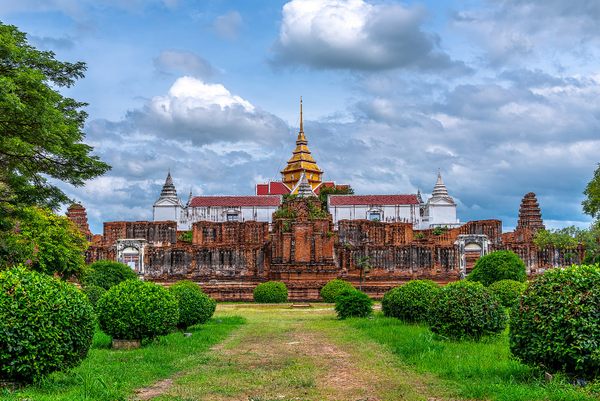Built in 1631, the Prasat Nakhon Luang, or “royal city castle” in English, is an architectural and archaeological wonder with a history spanning the various dynasties of Siam. Now a temple, it is a significant piece of Thailand’s Buddhist and Hindu religious heritage. King Prasat Thong of the fourth Ayutthaya dynasty of the same name ordered the palace to be built, modeling it after a Khmer palace commonly believed to have been Cambodia’s Angkor Wat, while a more academic suggestion says it was most likely the Baphuon Temple. The castle served as a temporary royal residence when the king made the annual pilgrimage to Wat Phra Phutthabat, upstream in Saraburi. Additionally, it was a venue for other religious ceremonies throughout the dynasty.
After the Ayutthaya Empire fell, the castle was left abandoned and ruined until the 19th century when it was repurposed by locals as a Buddhist site of worship. The relic “Buddhapāda” (Buddha’s footprints) was enshrined in a new temple built on top of the ruins of the once-royal palace. King Chulalongkorn visited the site in the late 19th century and ordered a complete mapping of the site alongside renovations.
Today, the ruins draw in temple-goers from all over the country who make pilgrimages to the Buddha’s footprints, as well as pray to the statue of Ganesha enshrined at the entrance. One can walk around the ruins and explore what once was a majestic palace, through corridors and towers flanked by ancient Buddha statues.


